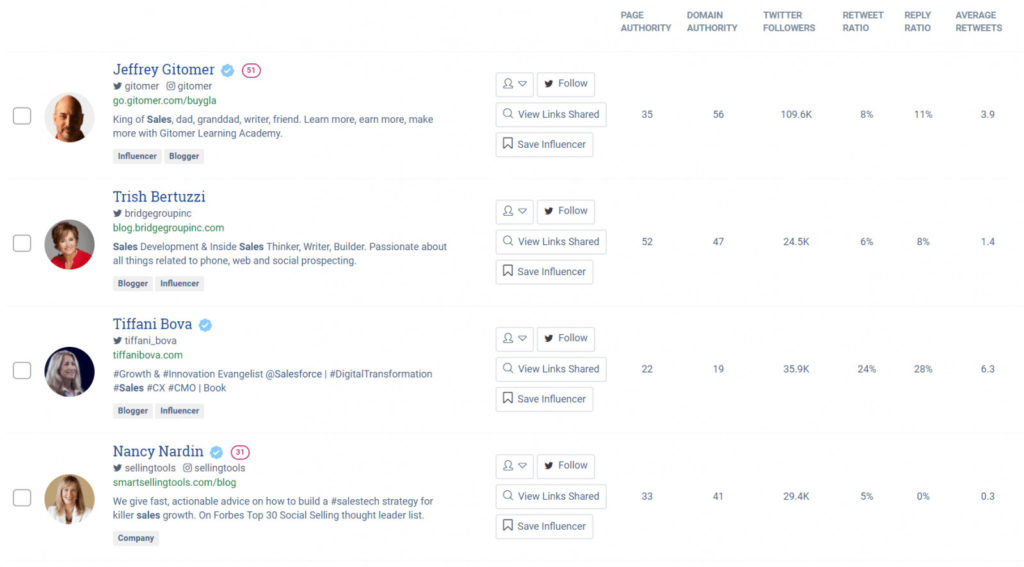Right now, there are two types of companies out there: those who have really figured out how to make social media a major factor in the success of their business (the minority) and those who have tried to make social media work for them, but can’t really point to any significant return on the time and money they’ve invested (the majority).
So, how can we explain the difference – and what can you do to be one of the success stories?
Social Media: Achieving Reach and Conversion
There are two key metrics that can help you think about your business and the market you serve.
Firstly, how many people or decision makers are there in the world that you would like your business to be selling to? If you don’t know the answer to that, a quick search on LinkedIn will probably give you a pretty good estimate of how many people you would want your business to win over.
Next, think of all of your company’s social media accounts and the number of fans, followers and connections that you have on those accounts. How many people do your accounts actually reach on social media? More often than not, the discrepancy between these numbers alone can explain why most businesses simply don’t see anything like the return they would want from social media. If your business has 200,000 people out there who are potential clients, then having 1,000 fans and followers on social media means you are barely scratching the surface.
We refer to this as a company’s reach on social media. If you don’t reach enough of the right people, you can’t ever hope to turn social media into a significant source of sales, or new hires, or partnership enquiries, or brochure requests…or whatever outcome it is that you would like social media to deliver for your business.
But reach alone isn’t enough. A company that reaches a lot of its ideal audience on social media, but still doesn’t see much in the way of tangible results each year, has effectively built itself a good brand. What you need alongside reach is conversion. So the second thing you need to focus on is having a conversion strategy in place – and testing that strategy relentlessly, so that you are constantly improving results.
In other words, how are you going to encourage people who have become fans, followers and connections to take the next step and book in for a sales call, request a demo or arrange to meet you? If you don’t master conversion, it’s unlikely that social media will ever impact your business’s overall success.
The 4 Social Media Steps You Should Follow
There are 4 key steps to increasing your reach and conversion rates, which will ultimately make a difference to the ROI you see from your social media marketing. And it’s because most businesses haven’t tackled these steps that they don’t get compelling results.
Step 1: Define your target audience.
Define your target audience (in as much detail as possible) and brainstorm the actions you need them to take in order to become valuable to your business.
The important thing here is to start with the end goal in mind. Let’s take my agency, Social-Hire, as an example. Here are some of the things our clients would typically want to achieve through social media:
- Potential new clients signing up to attend their next business breakfast
- Candidates registering their CV / Resume on the company database
- People requesting a live demo, brochure download or quote
- Potential business partners, journalists or prospects booking calls
Once you have determined the outcome you want, then your target audience becomes much clearer, too. For example, if you are using social media to encourage potential new clients to sign up for your business breakfast, then the audience you want to reach on social media would be the profile of a person you’d want to attend that business breakfast – or anyone else who can help you reach those people on social media.
That may sound obvious, but in practice it’s quite different from what many businesses are doing on social media. Lots of companies start out with a broad idea of who they want to reach – and no mechanism in place for converting that audience into actual business results. So a consulting firm might say “we want to reach executives in big global companies as they are the types of people who buy from us”; that’s very different from saying “we want to get HR Directors and Learning & Development Directors from big Retail or FMCG companies to attend our business breakfast, as that’s the profile of decision maker that is most likely to buy our consulting services”.
Step 2 : Make your social media accounts valuable, informative or entertaining.
Focus on making your social media accounts valuable, informative or entertaining for your target audience, so that you become a magnet for the right followers.
One of the most common mistakes businesses make on social media is having profile pages that overly sell what the company does. It is very unlikely that someone visiting your profile page for the first time is going to click to your website and buy something, or book in for a demo, straight away. Marketers know that this usually only happens once someone has had more exposure to your business, and has progressed along the track of knowing, liking and trusting your business.
With that in mind, your primary goal when someone visits one of your social media pages should be for them to click the button to follow, like or connect with that page. That way, they’re going to see your company’s updates for many months to come and, in time, may well take that next step of buying something or booking in for a demo.
By way of example, Hootsuite is a well known social media management tool. But notice how on their Twitter profile @hootsuite they lead with the value you’ll get from following them: “Social media news and tips from the world’s most widely used social relationship platform. Sign up for free: http://ow.ly/yPvI50hqFzz Support: @Hootsuite_Help”
So immediately, they are appealing to people who want to get better results from social media (ie. their ideal prospects), but they’re doing so by appealing to what they want, rather than overly pushing what Hootsuite does. Clearly, the bio wording is one important part of this; the other element is that what you share on social media has to live up to what you’ve promised in your bio! This is where finding and sharing great content comes in (Quuu can be really helpful in achieving this).
Step 3: Connect with the right people on each platform.
Proactively take steps to be seen by – and connect with – more and more of the right people on each social platform.
Put simply, don’t wait for people to come to you – you’ve got to get your profiles in front of them! There are numerous ways you can achieve this. You could run paid advertising campaigns to have your profiles seen by your ideal audience. You could spend some time befriending influencers in your industry, so that they will share your updates and your content will reach a new audience. You might proactively follow or connect with your ideal audience in the hope that they’ll reciprocate, interacting with their posts or getting involved in live social media events, such as Twitter chats.
Buzzsumo is a great place to start if you want to identify influencers to engage with, as you can research by topic and see which influencers i) have sizeable followings and ii) are most likely to engage with other people’s content. Here’s an example looking at potential influencers on the subject of “Sales”:
The key point is that the growth rate of your reach is going to be directly related to how proactive you are at getting more of the right people to see your social media profiles.
Step 4: Engage and re-target.
Engage with people individually and re-target them with advertising to increase the conversions you get from the audience you’ve built.
This last step is the one that will differ the most from company to company. If you need small numbers of the right people to take an action, then you might well achieve that through personal interactions. So getting your ideal prospects to attend a business breakfast can be most effectively achieved by messaging those social media connections individually and inviting them one by one. Whereas if you need thousands of the right people to visit a sales page and make purchases, bookings, enquiries, etc., then you are probably going to achieve that through clever retargeting campaigns for people who’ve already shown an interest in your business (for example, by using the Facebook Pixel to show adverts to people who’ve visited your website before, but not yet taken the step you want them to take). Here’s an example where we’re encouraging people who’ve visited recruiting-related pages to take the next step and register for a webinar:
It’s through these 1-to-1 interactions on social media, and through targeted advertising campaigns, that conversions happen. It’s a step companies often overlook – the assumption being that if they build a huge following on social media, it’s only a matter of time until those followers start visiting the website and taking action. Wrong! You have to proactively encourage that to happen, which is why step 4 is such a key to success and so often the missing part of the puzzle for companies that feel they should be getting results, but aren’t.
Time To Put These Ideas Into Practice
Even if your business is already generating results via social media, I recommend you nonetheless work through these four steps – you might find areas where you could improve your current efforts! For everyone else, use this approach as the foundation for your social media strategy and you will start seeing results in a matter of months.
For a more detailed explanation of all these steps, feel free to join one of our forthcoming webinars.
About the Author
Tony Restell (@tonyrestell) is the Founder of Social-Hire.com and works with recruitment teams and small business owners to generate tangible results from social media. He’s a published author, Cambridge graduate and Quuurator.








